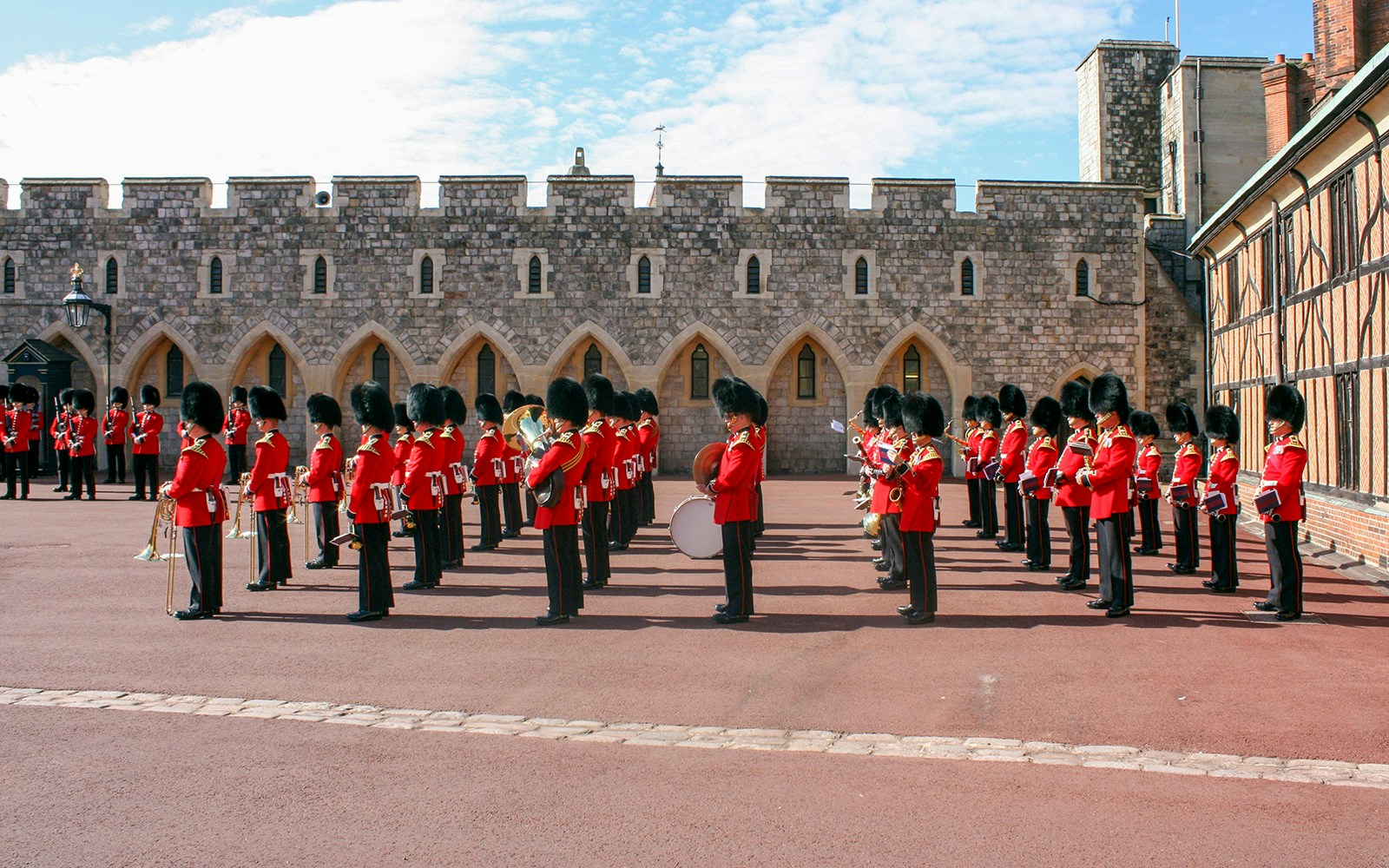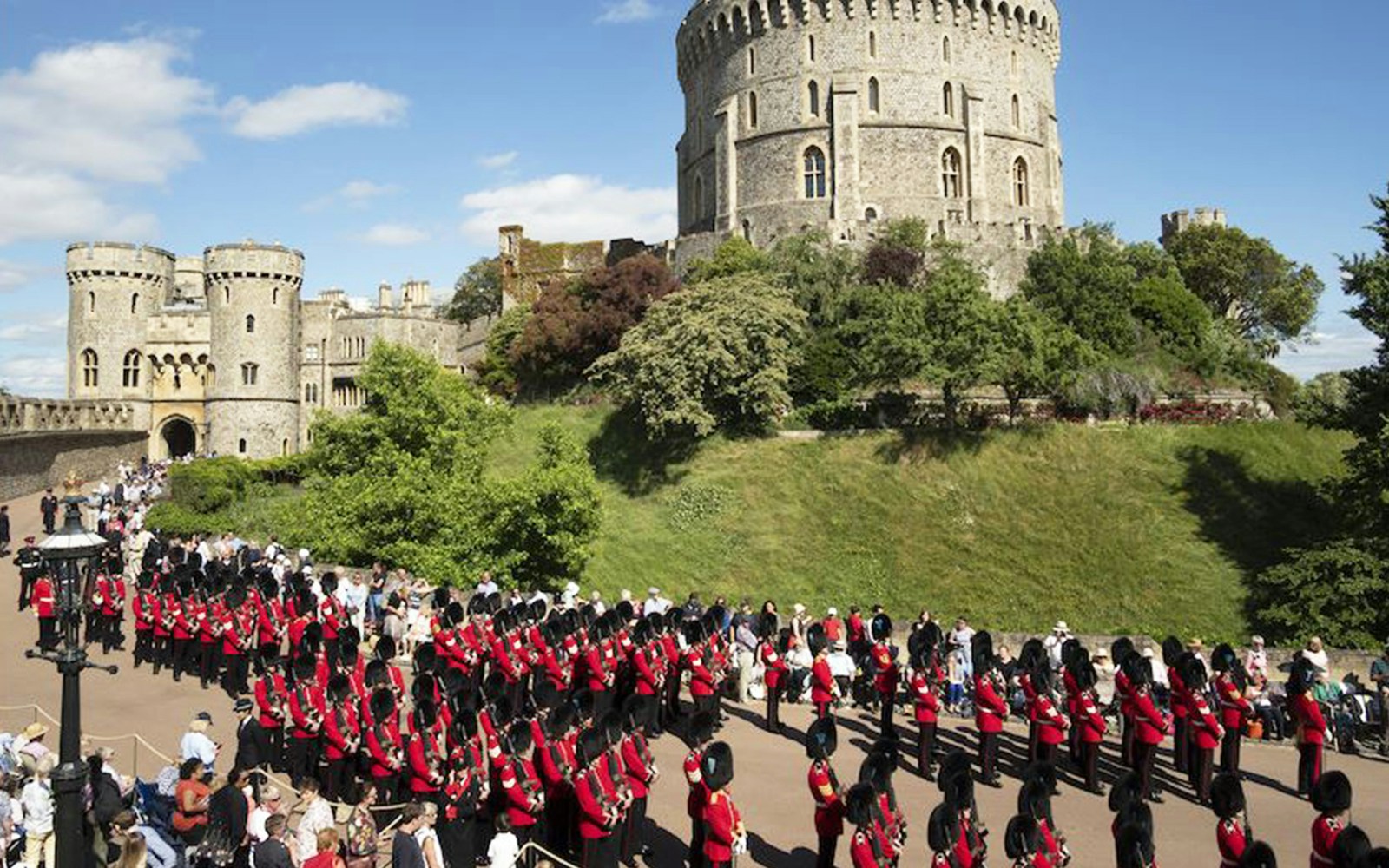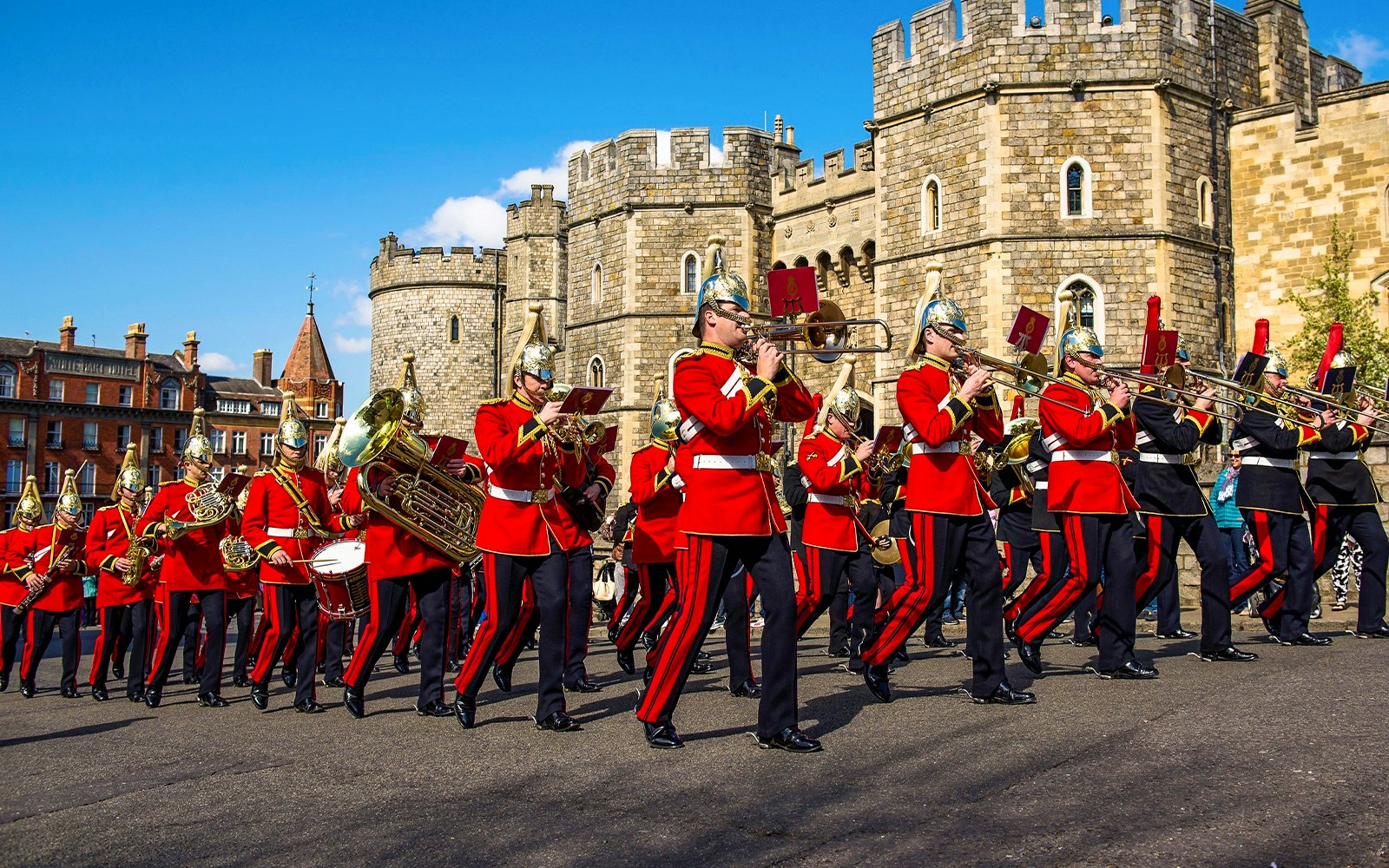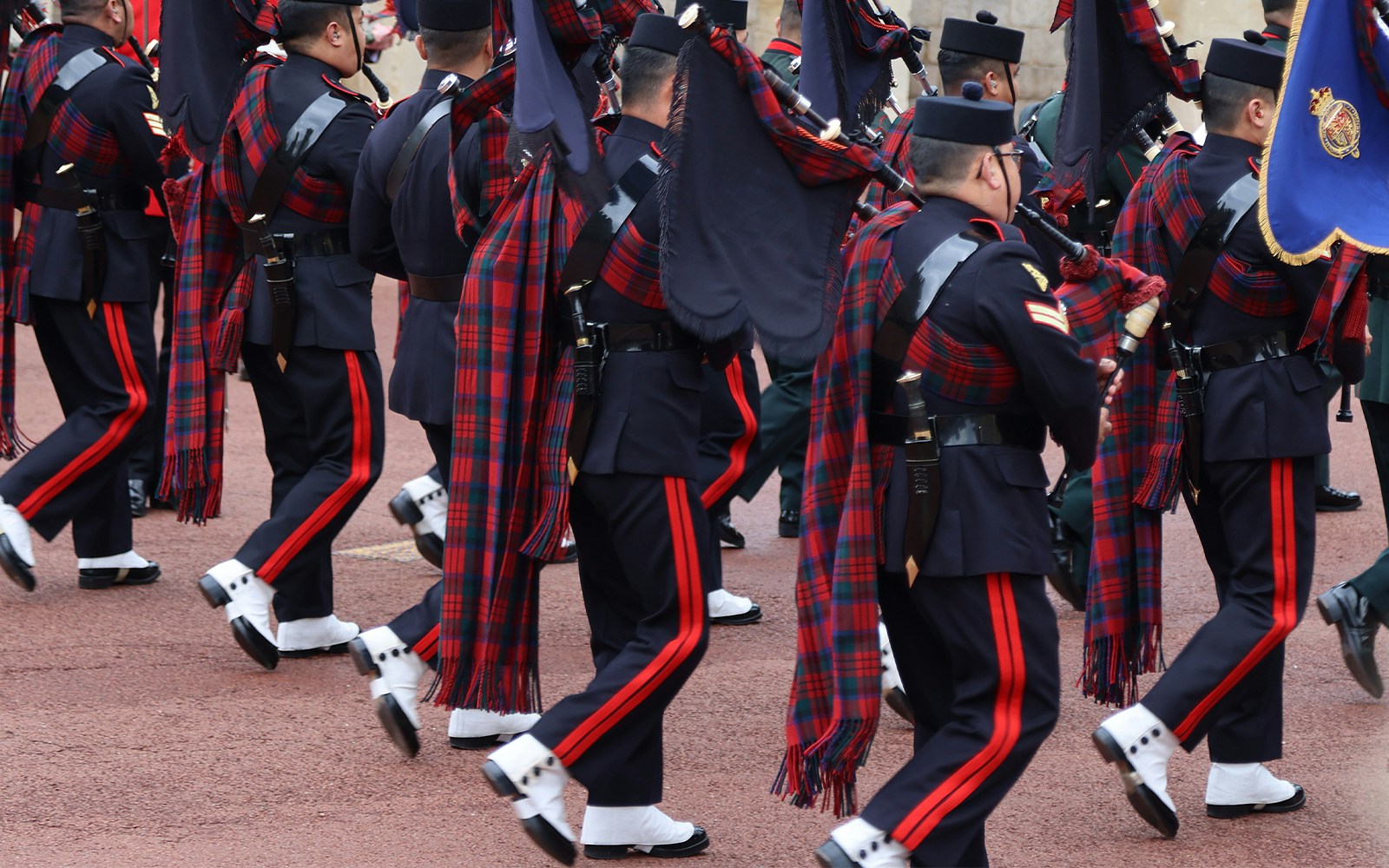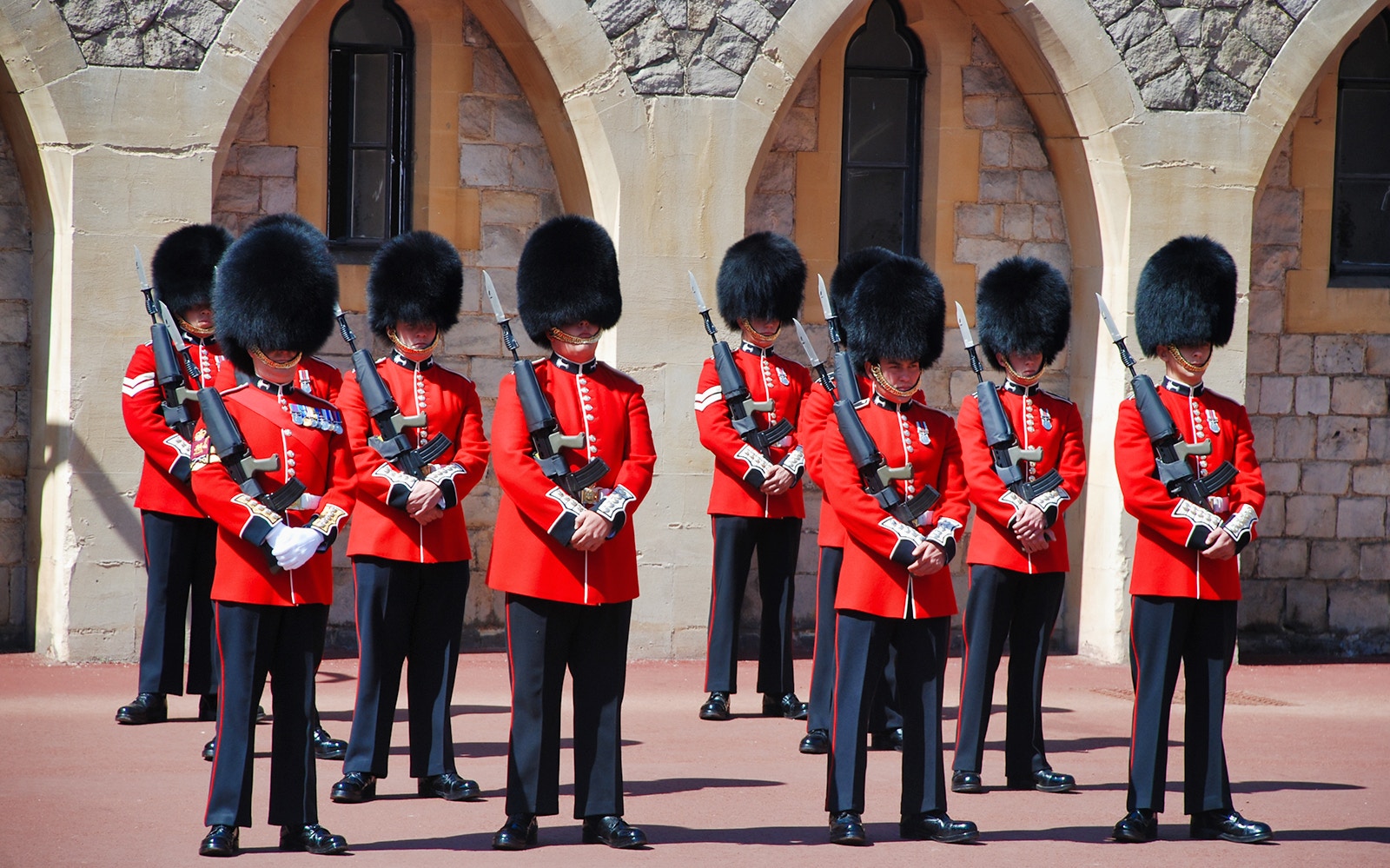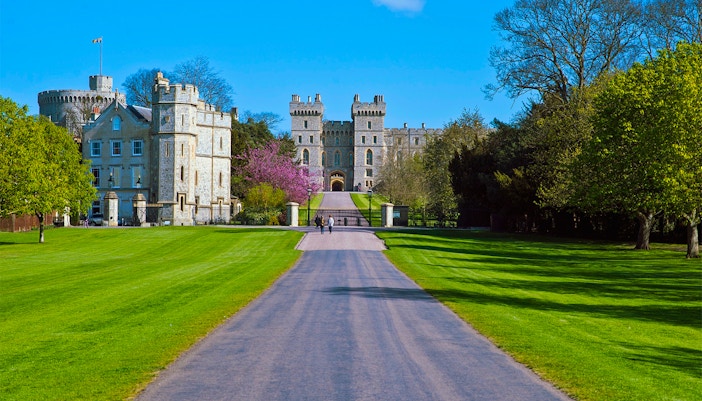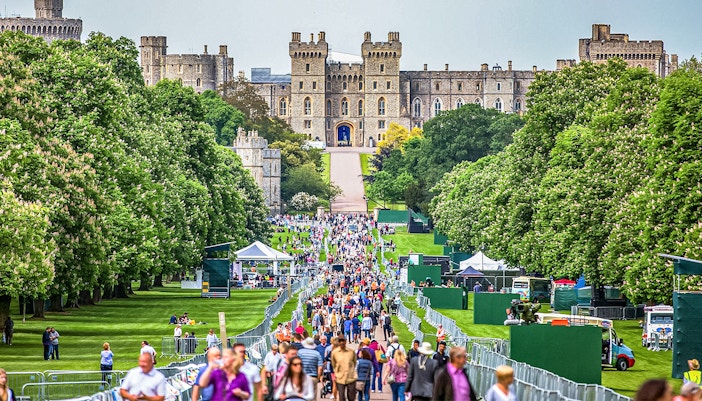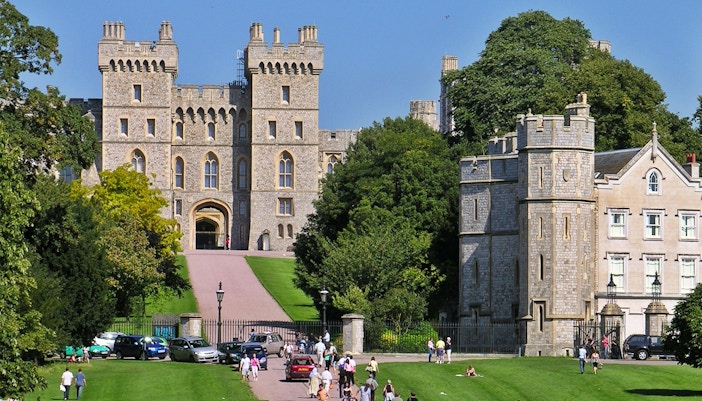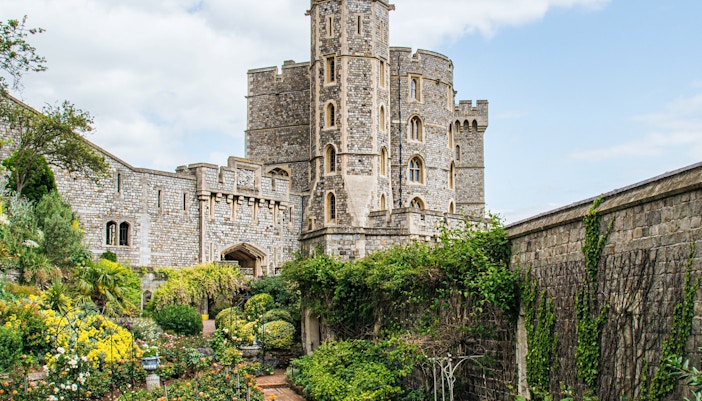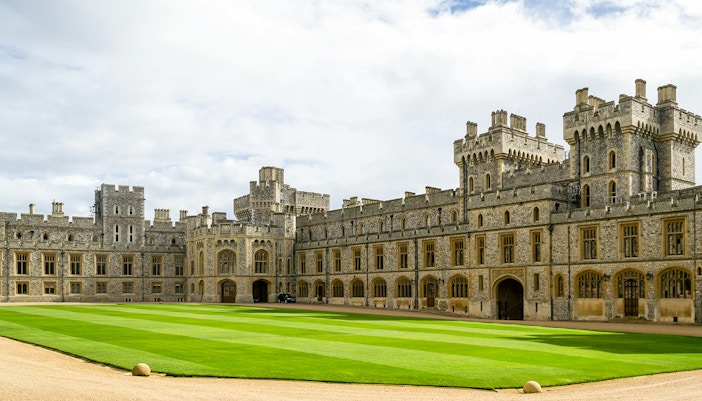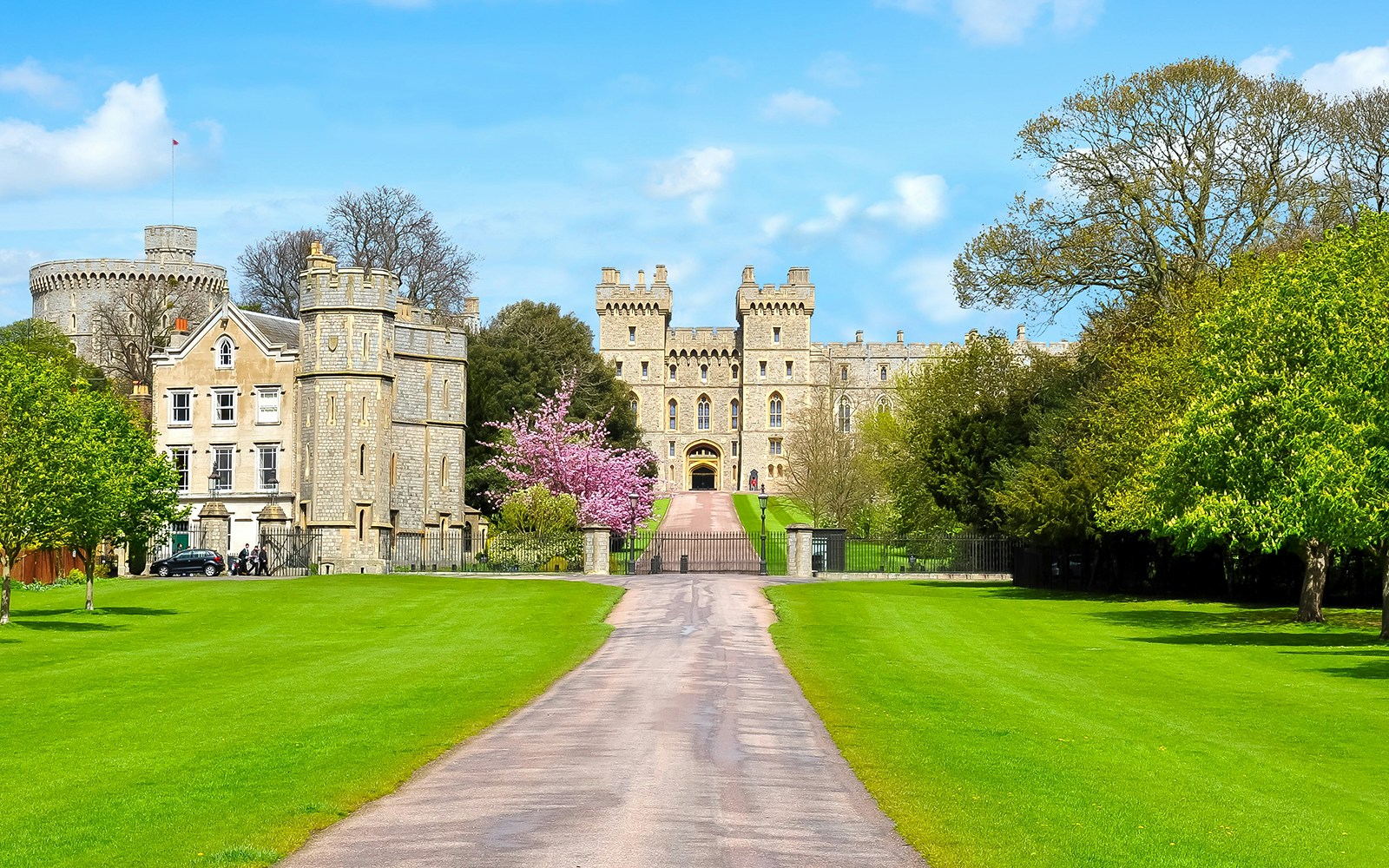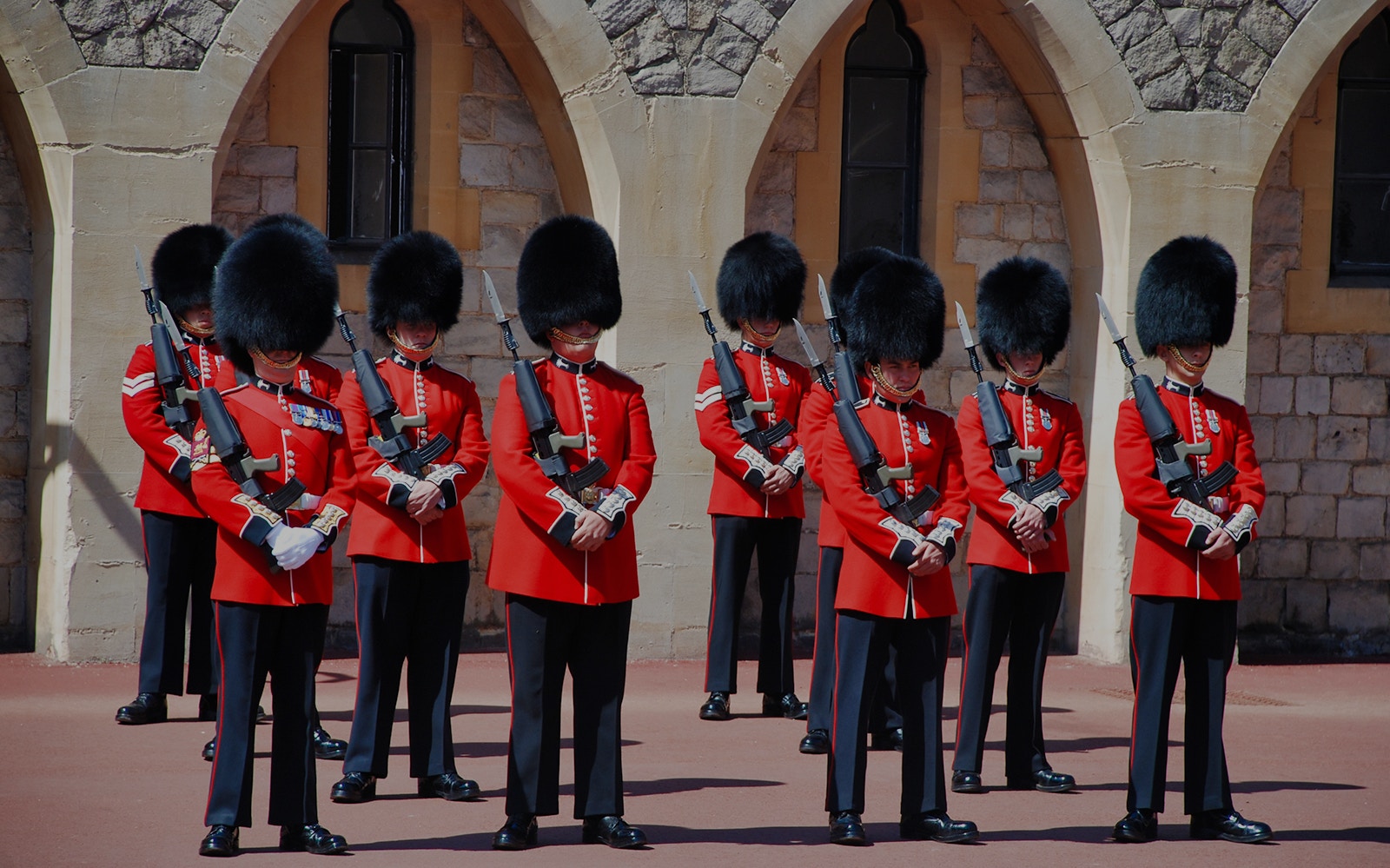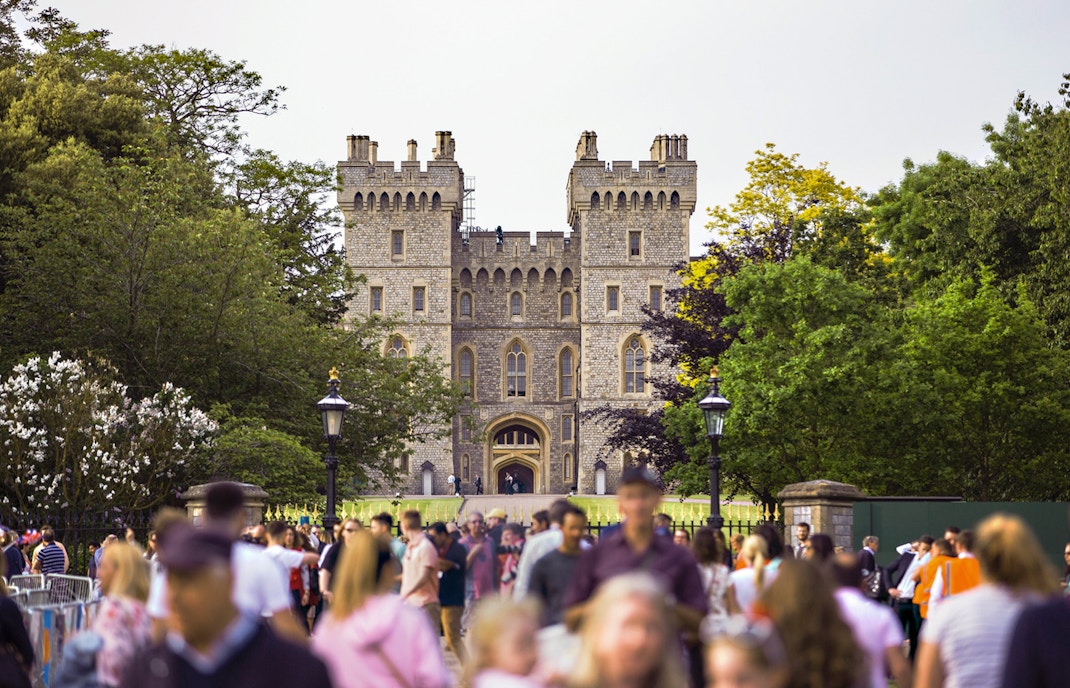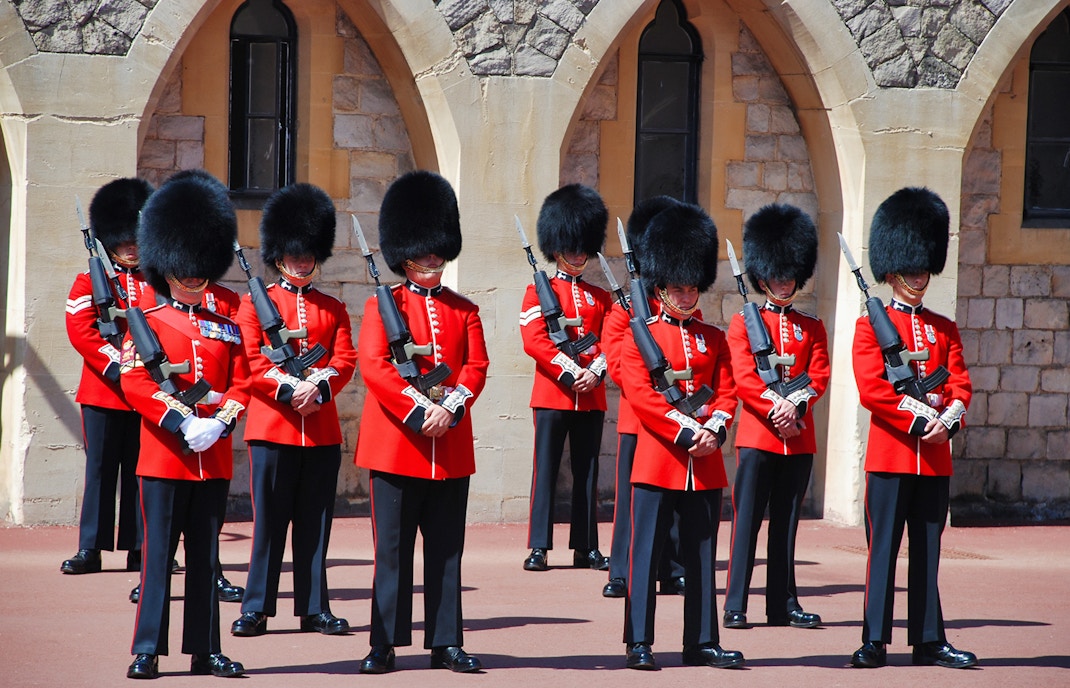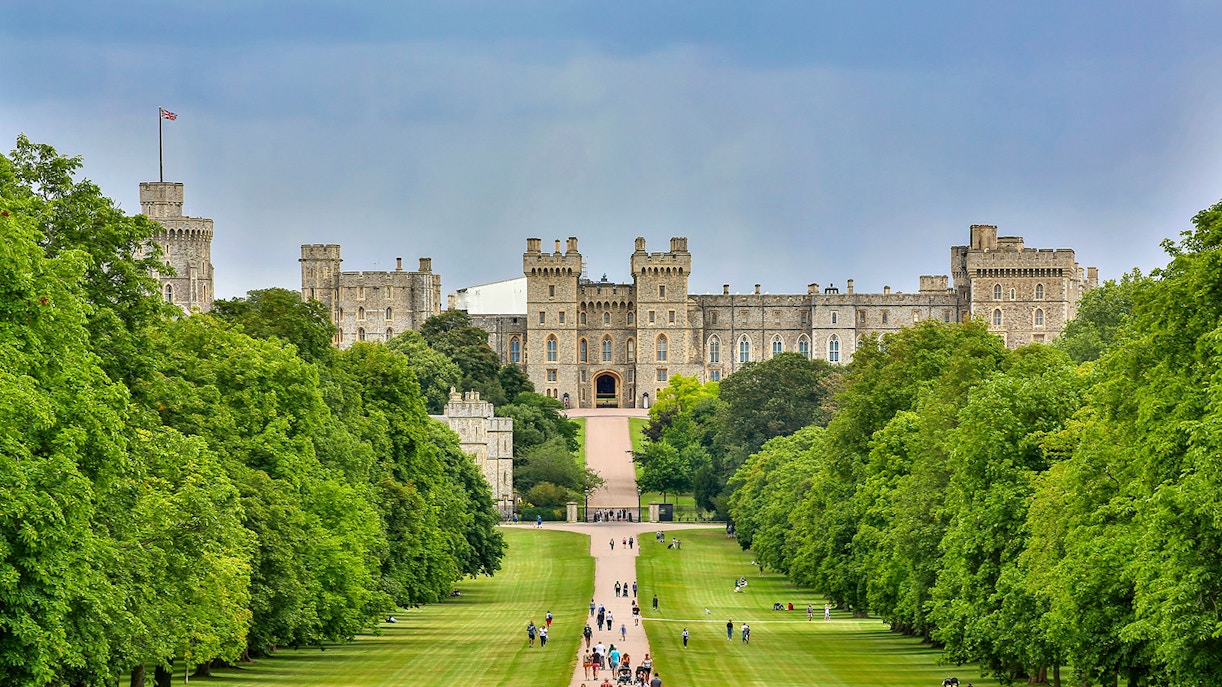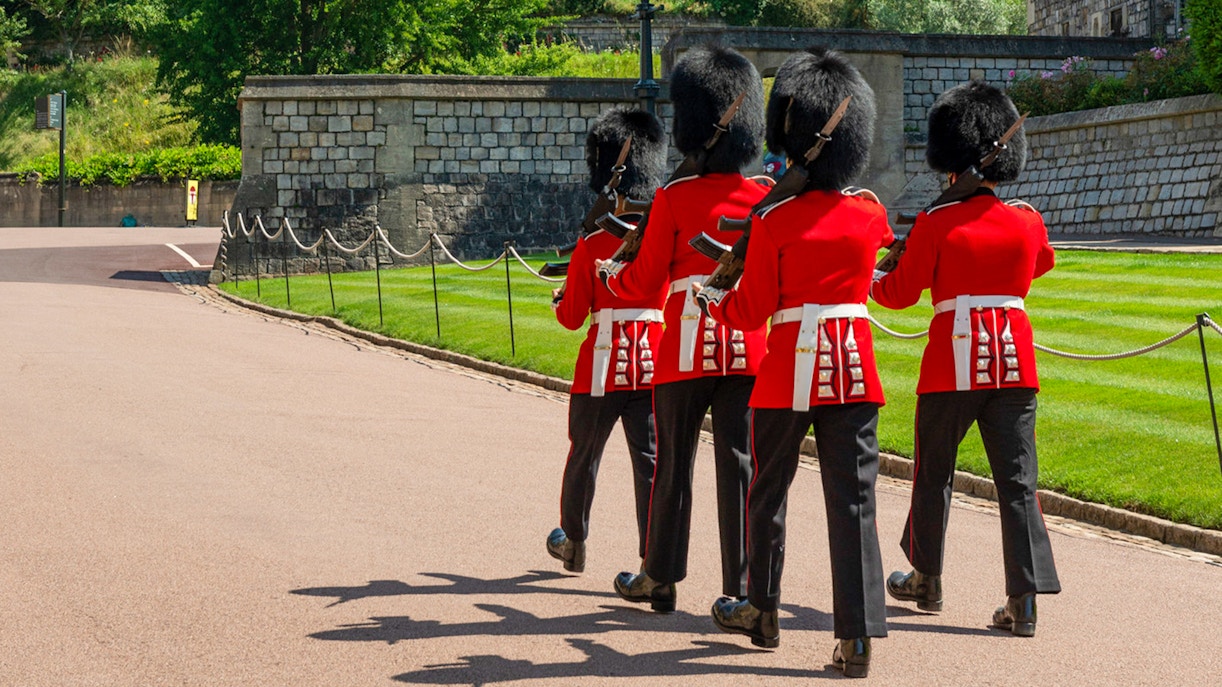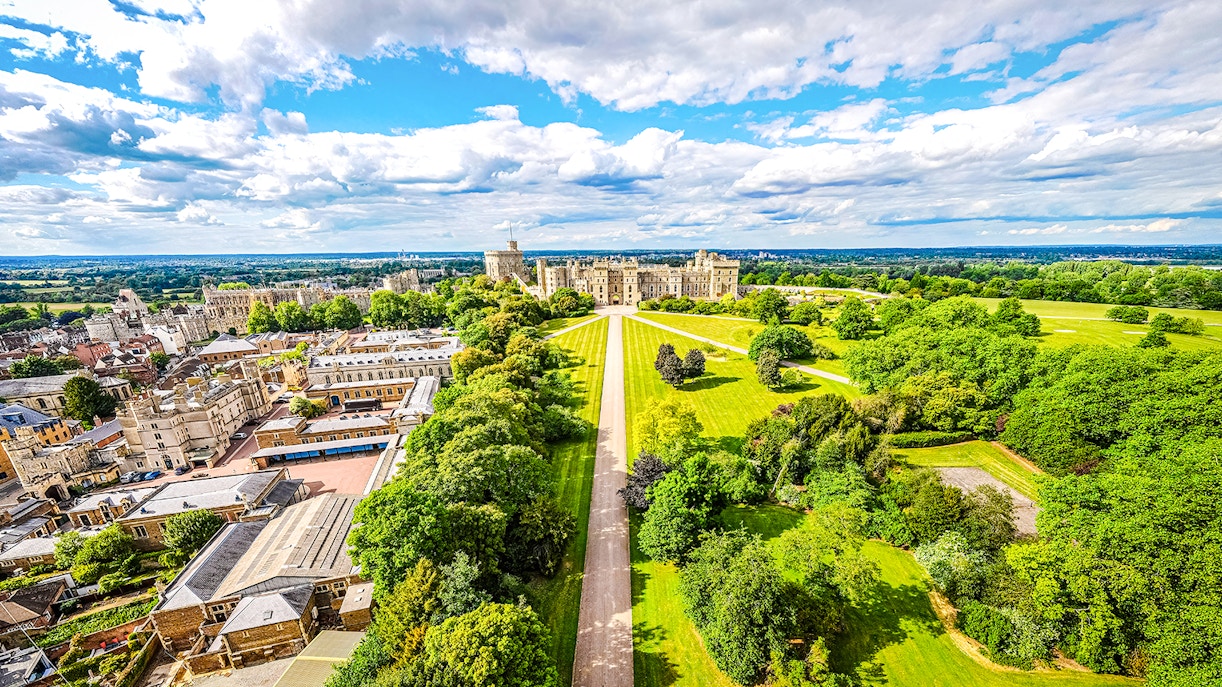Windsor Castle: Takes place within the grounds of the oldest and largest occupied castle in the world. The backdrop of the Castle is unmatched.
Buckingham Palace: Takes place on the forecourt of the Sovereign's official London residence, providing a classic, world-famous London experience.
Why witness the Windsor Castle Changing the Guard ceremony?
A glimpse of living history
Witness a centuries-old tradition, with the Household Division regiments having protected the Sovereign and Royal Palaces since 1660.
Military might and precision
The ceremony is a flawless display of military coordination, showcasing the elite soldiers of the Household Division who, despite their ceremonial role, are first and foremost highly trained infantry. Expect to see flawless movements during the ritual of the 'Present Arms' (saluting with their rifles) as the old and new guards exchange compliments.
Iconic uniforms
You'll see the soldiers of the Household Division (such as the Grenadier, Coldstream, Scots, Irish, and Welsh Guards), instantly recognisable in their distinct scarlet tunics and towering bearskin hats. These are not actors, but highly trained infantry soldiers.
Pomp, pageantry, and music
The Windsor Castle Changing the Guard ceremony is often accompanied by a Regimental Band or Corps of Drums, which provides a stirring musical backdrop. They play a wide range of music, from traditional marches to popular songs, adding to the grandeur of the event.
The Handover of the Keys
The symbolic touching of hands as the Captains of the Guard exchange the Castle keys is a key ceremonial moment you will see.
See the royal connection
The ceremony is a tangible demonstration of the formal relationship between the Armed Forces and the Monarchy. By watching the Windsor Castle Changing the Guard, you are observing the ongoing commitment of the soldiers to guard The King's residence.
